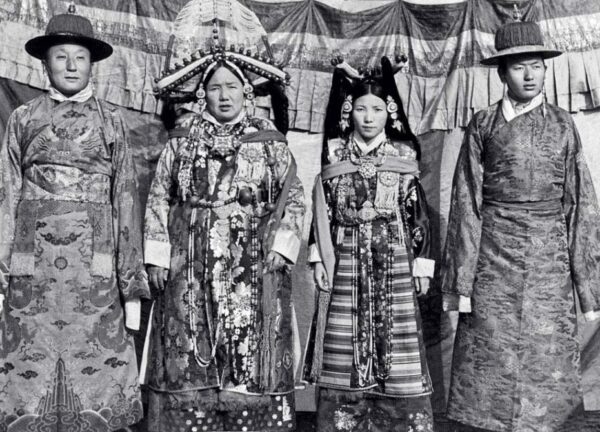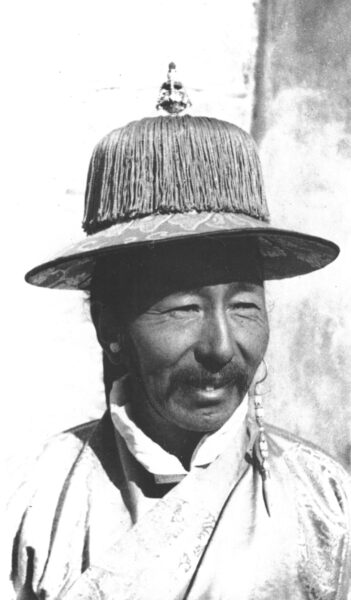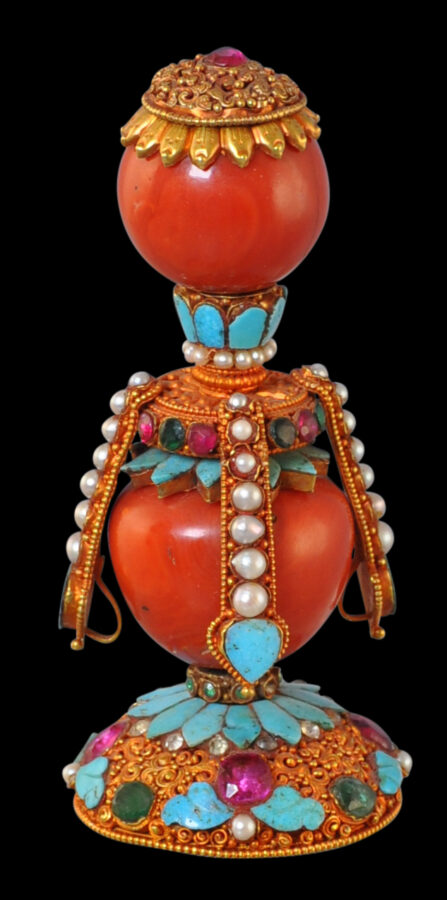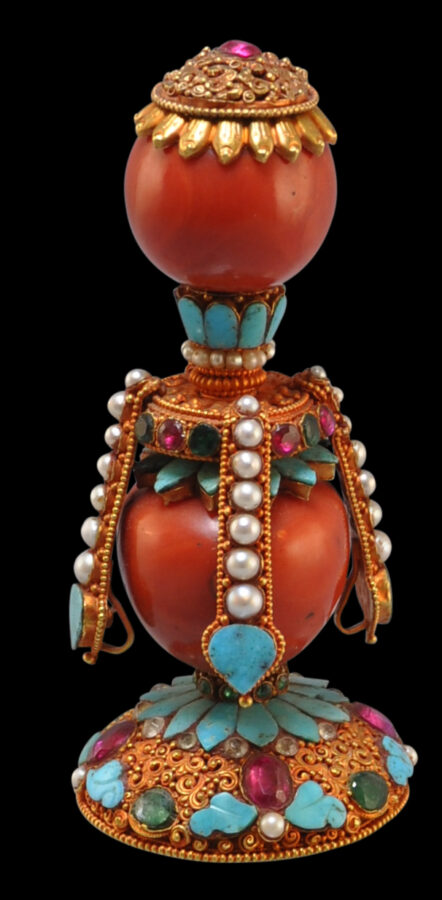This spectacular hat finial was commissioned, almost certainly in Lhasa, for a senior Tibetan government official, most likely to be worn atop his summer hat (changta). It comprises two massive spheres of coral, probably of Mediterranean origin, with red-stained, high-grade gold mounts, that have been inset with turquoise plaques, some 62 pearls, glass, red garnets, possibly demantoid garnets and zircons.
The goldwork is chased with tight scrollwork. The edges are decorated with pearled goldwire.
The finial follows the kalasha-vase form that hat finials took in Tibet. These were based on the hat finials of the Qing court in China, but were far more lavish and ornamental. The jewels became more lavish and intricate into the 20th century when they were worn on the occasion of religious festivals, official state occasions and weddings. The lavish lifestyle of the Lhasa elite came to an end when China occupied Lhasa in 1959 and most of the elite fled.
A related example is illustrated in Casey Singer (1996, p. 116-117). Another is illustrated in Ghose (2016, p. 103).
The Tibetan aristocracy commissioned large quantities of jewelled items over the centuries. There was a large degree of variation in what was produced.
The immediate provenance for this ornament is the Wingfield family, the Viscounts of Powersourt (pronounced ‘Prscrt’). The 7th Viscount of Powersourt (b. 1836-1904) travelled to India in his lifetime and was a keen art collector, buying in India and elsewhere. He was also a well-known buyer of art and curios in London, Paris and Rome. It is possible that the ornament came to the family then, although it is likely that it dates to the first half of the 20th century. The 7th Viscount’s daughter Lilah attended King George V’s Delhi Durbar in 1911 and travelled around India after that including to the Khyber Pass. Possibly, the ornament came to the family then.
Perhaps the gold content comprises around 60% of the finial’s overall weight. The underside has a silver disk to allow the finial to be secured to a hat.
The finial is in excellent condition.

This photograph, taken at a wedding in Lhasa in the 1940s, shows the men wearing summer hats topped with kalasha-form hat finials similar to the example here.

An official in a summer hat with a finial very similar to the example here, circa 1936-37.
References
Casey Singer, J., Gold Jewelry from Tibet and Nepal, Thames & Hudson, 1996.
Ghose, M. (ed.), Vanishing Beauty: Asian Jewelry and Ritual Objects from the Barbara and David Kipper Collection, Art Institute of Chicago, 2016.









